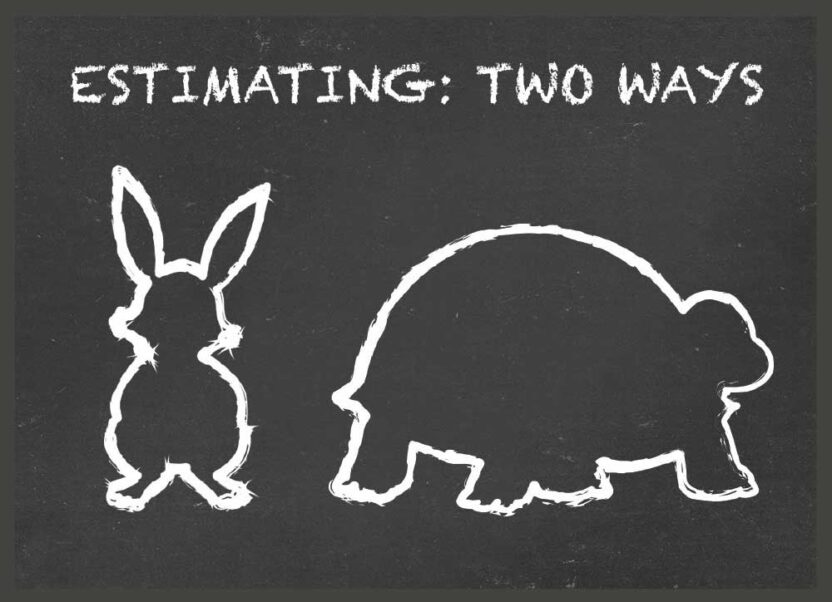
Back to the Basics: Two Ways To Estimate Retirement Expenses; One Fast, One Slow
Retirement Planning done well should feel like a state of flow. Money flows in, money flows out; the rate of this flow is determined by your chosen lifestyle. Ideally, your lifestyle conforms naturally to your desires and needs, as they shift with your health and interests. Thus your accumulated assets should provide you with enough income (flow in) to match your expenses (flow out). It’s this state of flow we’re after, but we need your help to make it happen.
One of the determinants of the success of a retirement plan is the amount of income that a given portfolio can generate. That’s a big part of what we do for you. But the other side of that equation, the ‘flow out’ is ultimately up to you. That is, the amount of expenses you generate is all on you. So, when I ask an aspiring retiree what they intend to spend each month once retired, I often get an uncomfortable shift in the chair, followed by a “We’re not quite sure yet.” So with that in mind, I’d like to offer two methods with which to determine your likely amount of expenses in retirement. At least as a starting point.
Method 1 (the fast way):
Simply add up total household income while still employed, subtract retirement plan contributions and monthly savings (after all, you don’t need to keep saving once retired), taxes paid, and any work-related expenses. This number should be close to your current lifestyle cost. From there, it’s much easier to make adjustments for changes to expenses when retired, like health care, Medicare Supplemental Insurance, travel, less dining out (or more), etc.
Method 2 (the slow way):
With this method, you’ll pull out all credit card statements, checkbook registers, utility bills, insurance statements, etc. Your goal here is to account for every expense you have, for at least a three-month period. This allows you to see trends in spending and also avoid missing any quarterly payments, like car insurance. It’s this method that connects you more closely with your money because it brings you face-to-face with each and every expenditure you have.
One very useful exercise to do when using this method is to look at each expenditure, or category of expenditures, and ask yourself, “Is this an area that gives me fulfillment commensurate with the amount I spent?” In other words, do you get as much joy from this expense as you’d like to receive? Maybe you should spend less in this area? Conversely, is it an area that you should spend more money on?
Here are some personal examples. Many years ago, when I worked in a corporate job that I very much disliked, I realized I was spending $1.00 each afternoon to buy a 20-ounce drink from a vending machine, as a reward for making it through the day. Since I wasn’t quite ready to give up the habit, I started buying it by the case and bringing one from home each day. It cost me just 20 cents each time I drowned my sorrows in caffeinated bliss, saving me a couple hundred bucks each year. More importunely, the exercise was like holding up a mirror, and convinced me to eventually quit my miserable job and become self-employed, as a financial advisor!
On the flipside, the same exercise showed me that I was spending effectively nothing on my favorite hobbies each year. Here I was, passionate about these interests and I wasn’t investing a single dime on those passions! This proved to me that I had allowed myself to drift away from some of the things that brought me joy and replaced them with activities that stripped me of my joy. What had happened!?
Your Next Move
As is so often the case, the fast way may be faster but it may not be the best way. If you’re looking for a way to both better understand how much money you’ll need to cover your retirement expenses, and a way to better align your passions with your dollars, choose the slow way. Either way, regaining perspective of your money can help reignite some of those passion areas in your life that may have been dormant for too long.
Retirement planning has a lot to do with planning your money wisely. It should also include a heavy dose of planning your life wisely. After taking a closer look at how you use money to support your life, I hope you’ll see opportunities to invest more in being the you that you’ve always wanted to be, and not the less-than-you that may have slowly crept in when you weren’t paying attention. All of this is possible by looking at credit card statements? Try it and find out for yourself.
The Great Decluttering is a process and not a destination. It requires time, effort, and patience, all of which are suddenly available to you in this strange time. Stuff was great and is great, but only when it’s used for a purpose greater than itself. Once that day has passed, it’s time to pass it on. Let’s unclutter and live more fully.

